The US-China Think Tank Symposium opened Monday in Des Moines, the capital of the US state of Iowa.
At the opening ceremony, Zhao Qizheng, former minister of China's State Council Information Office said both China and the US have benefited from their economic and trade relationship.
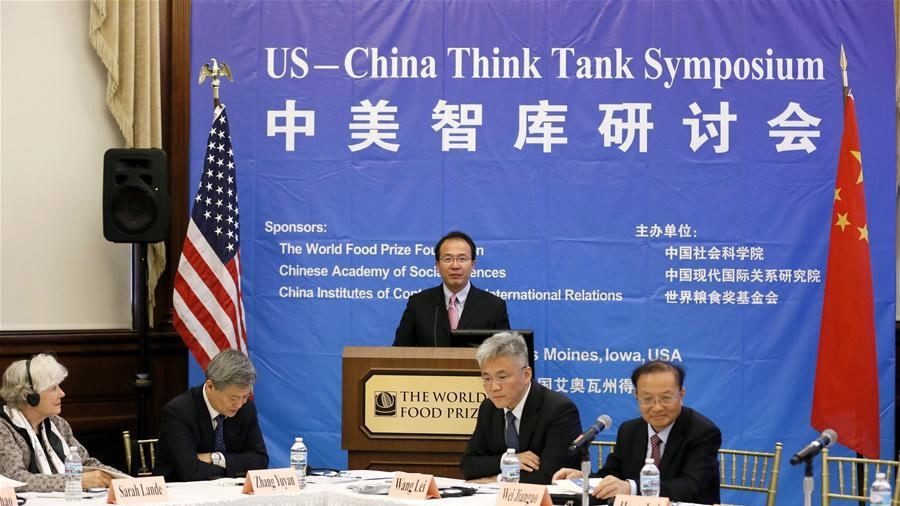
Former minister of China's State Council Information Office Zhao Qizheng speaks at the US-China Think Tank Symposium in Des Moines, Iowa, the US, June 12, 2017. /Xinhua Photo
"Sino-US economic and trade cooperation promises huge opportunities and potentials, and the prospects are very promising," he said.
China is the largest trading partner of the US, and US the second of China. The bilateral trade in goods of the two countries last year reached 524.3 billion US dollars, services exceeded 110 billion dollars and two-way investment over 200 billion dollars.
US exports to China see greater growth
China is the largest export market of the US outside North America and the EU, and also one of its fastest growing major export markets.
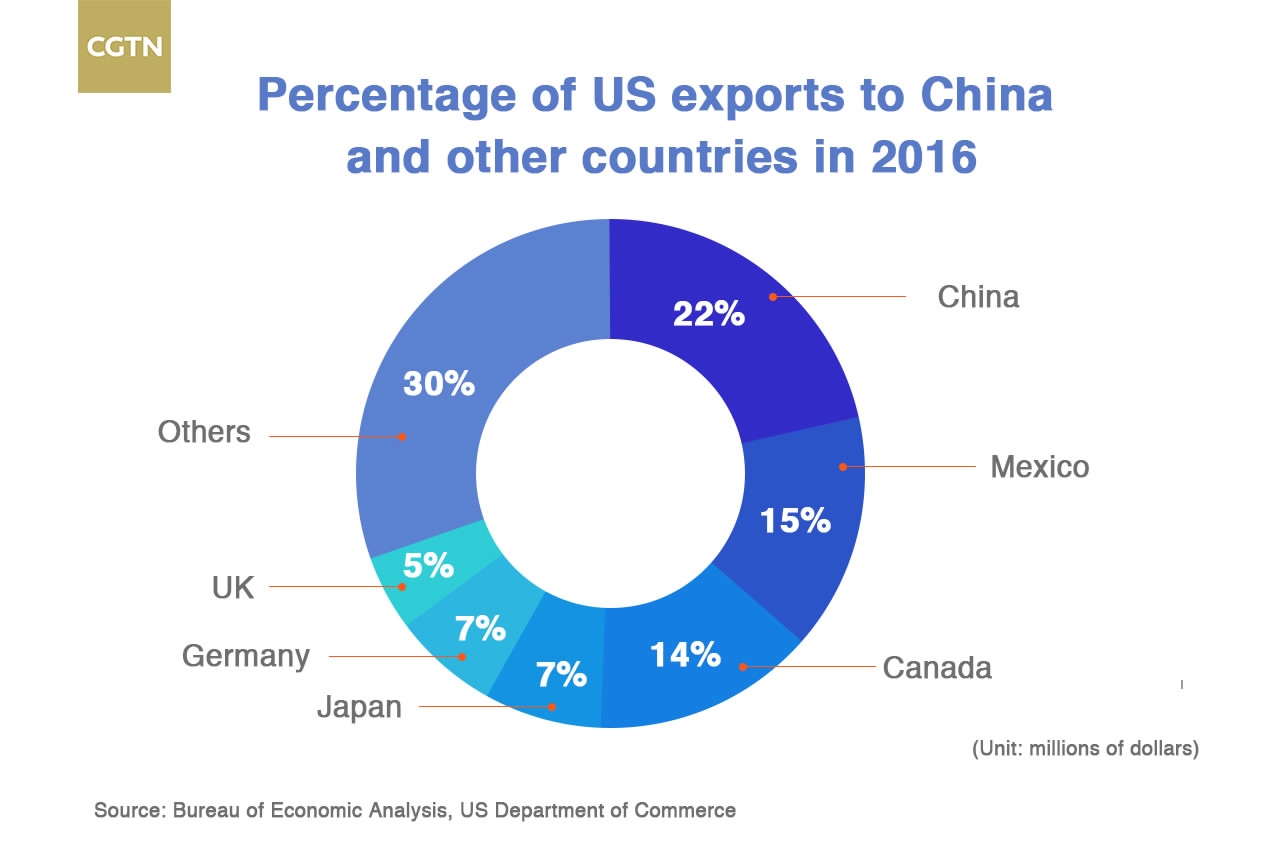
Since China joined the World Trade Organization (WTO), US exports to China have surged by five times, far higher than the 90 percent increase in total US exports, according to the latest Research Report on China-US Economic and Trade Relations released by Chinese Ministry of Commerce.
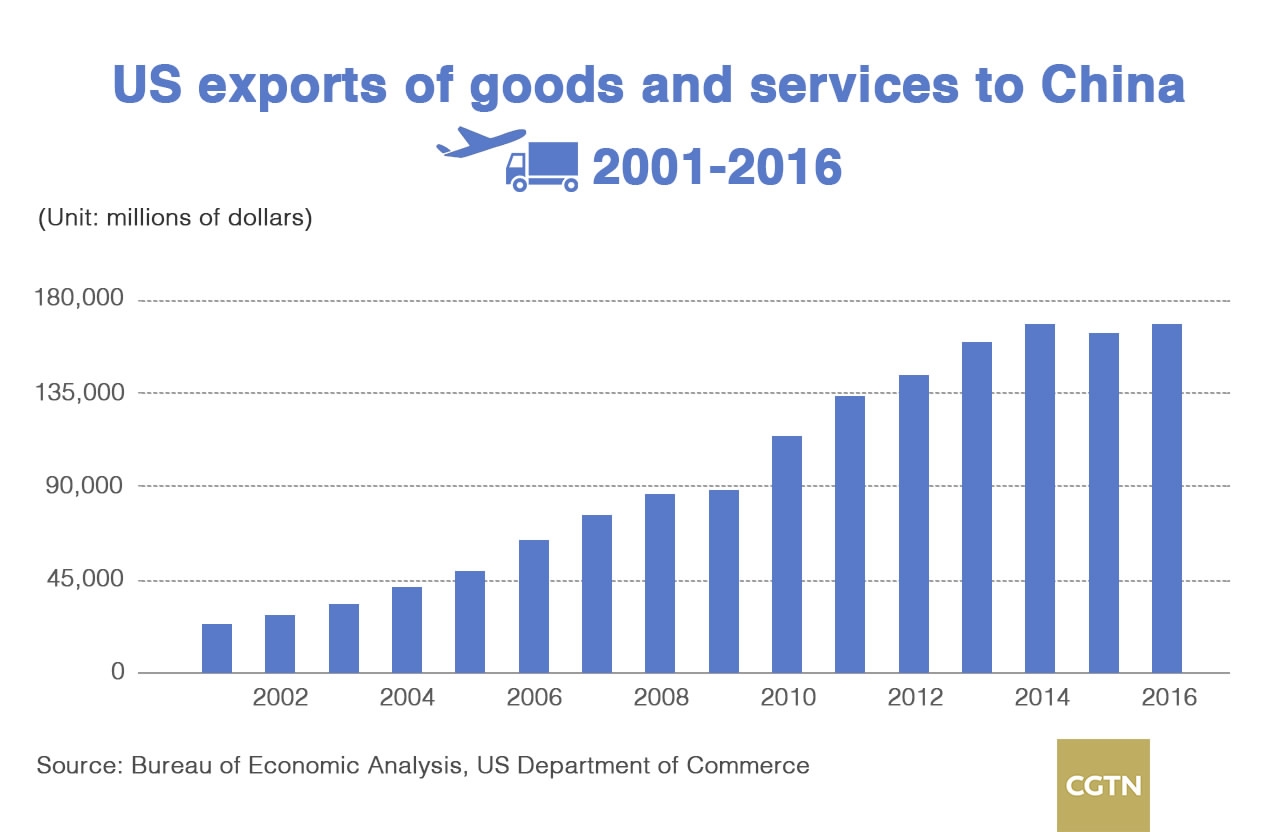
The average annual growth rate of US exports to China from 2001 to 2016 hit 14 percent, nearly three times faster than that of total US exports and also much higher than that of China's exports to the US. US exports to China in 2016 have been up five times from 2001, while total US exports only grew 90 percent during the same period.

China has become an important overseas market of many US products, especially bulk agricultural products and high-end finished products. Currently, China is the largest export market of American aircraft and soybeans, and the second largest of automobiles, integrated circuits and cotton.

Last year, US exported to China 62 percent of its soybeans, 17 percent of automobiles, 15 percent of integrated circuits, 14 percent of cotton and 25 percent of Boeing aircraft.
According to US Department of Commerce, US exports of goods and services to China supported an estimated 911,000 jobs for the US in 2015, 601,000 supported by goods exports and 309,000 supported by services exports.
US service exports to China remain surplus
The annual output value of the US service sector accounted for 79.5 percent of its GDP, according to the Central Intelligence Agency.
The US has maintained long-term surplus in trade in services. In 2016, US trade in services saw a surplus of 249.4 billion dollars, and China contributed to 34.8 percent.

The US has provided China with huge external demands. From 2008 to 2016, the proportion of exports to the US of China's total exports remained at just above 16 percent, the Chinese Ministry of Commerce reported.
The industries of China and the US are highly complementary, and the US is already an important overseas market for many Chinese products. Electric machines, electric apparatus and sound equipment, mechanical appliances and parts, furniture and parts, toys, game supplies and parts, and shoes and boots are the product categories in relatively big amounts among Chinese exports to the US.
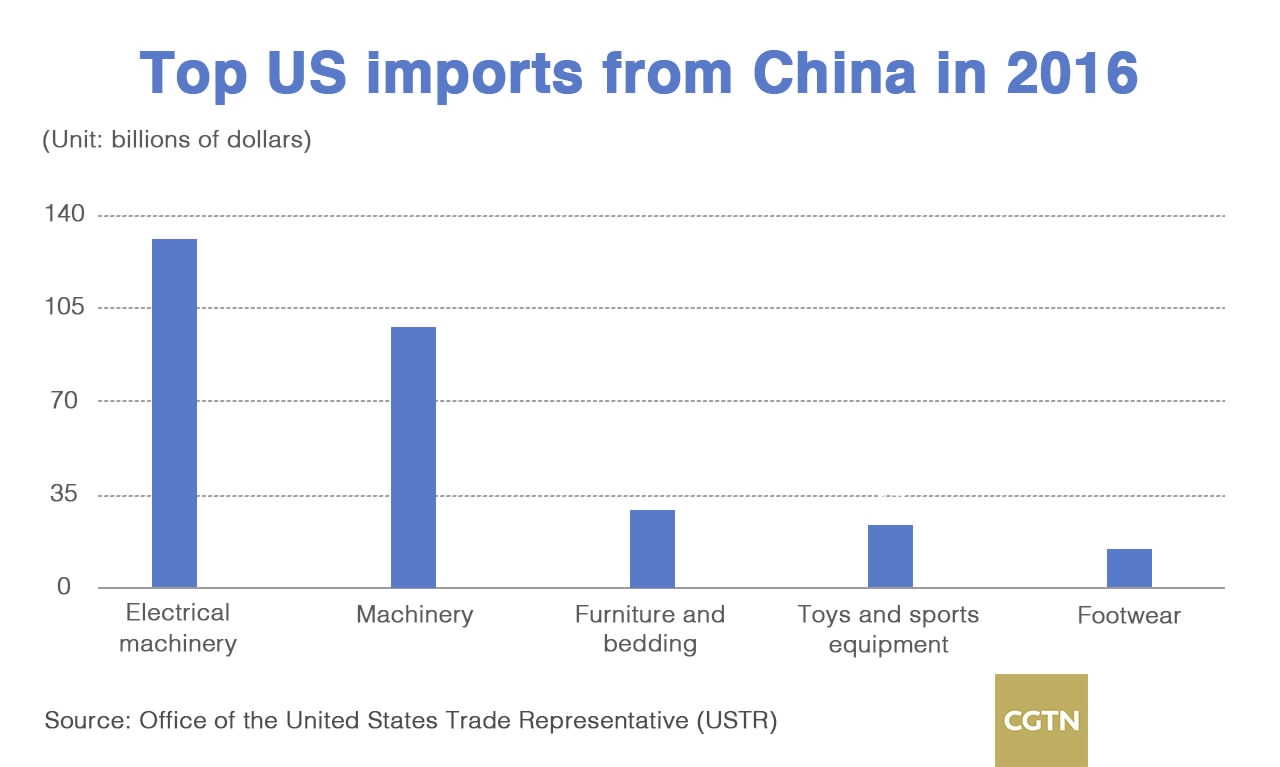
US high-tech and information technology enterprises have promoted the development of relevant sectors in China. At present, the US is China's largest source of technology imports and the second largest technology export destination.
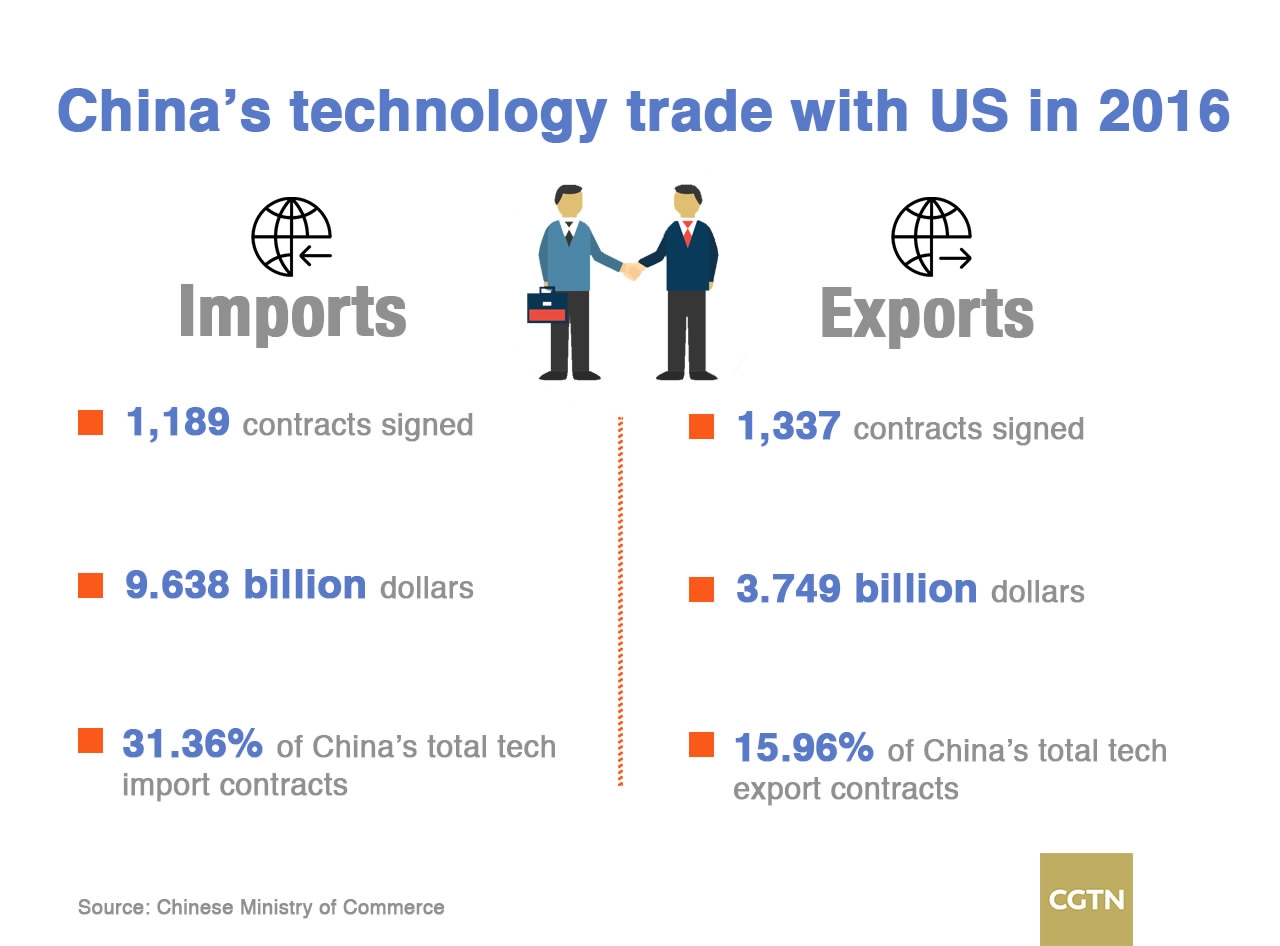
Corporate investment between China and the US
Most of the US-funded enterprises in China are performing well, and the Chinese market has become an important growth point and source of profits for the US. Investment of Chinese enterprises in the US is also growing rapidly. Chinese investment projects have covered 46 states and 425 congressional districts, creating over 140,000 jobs for the US.
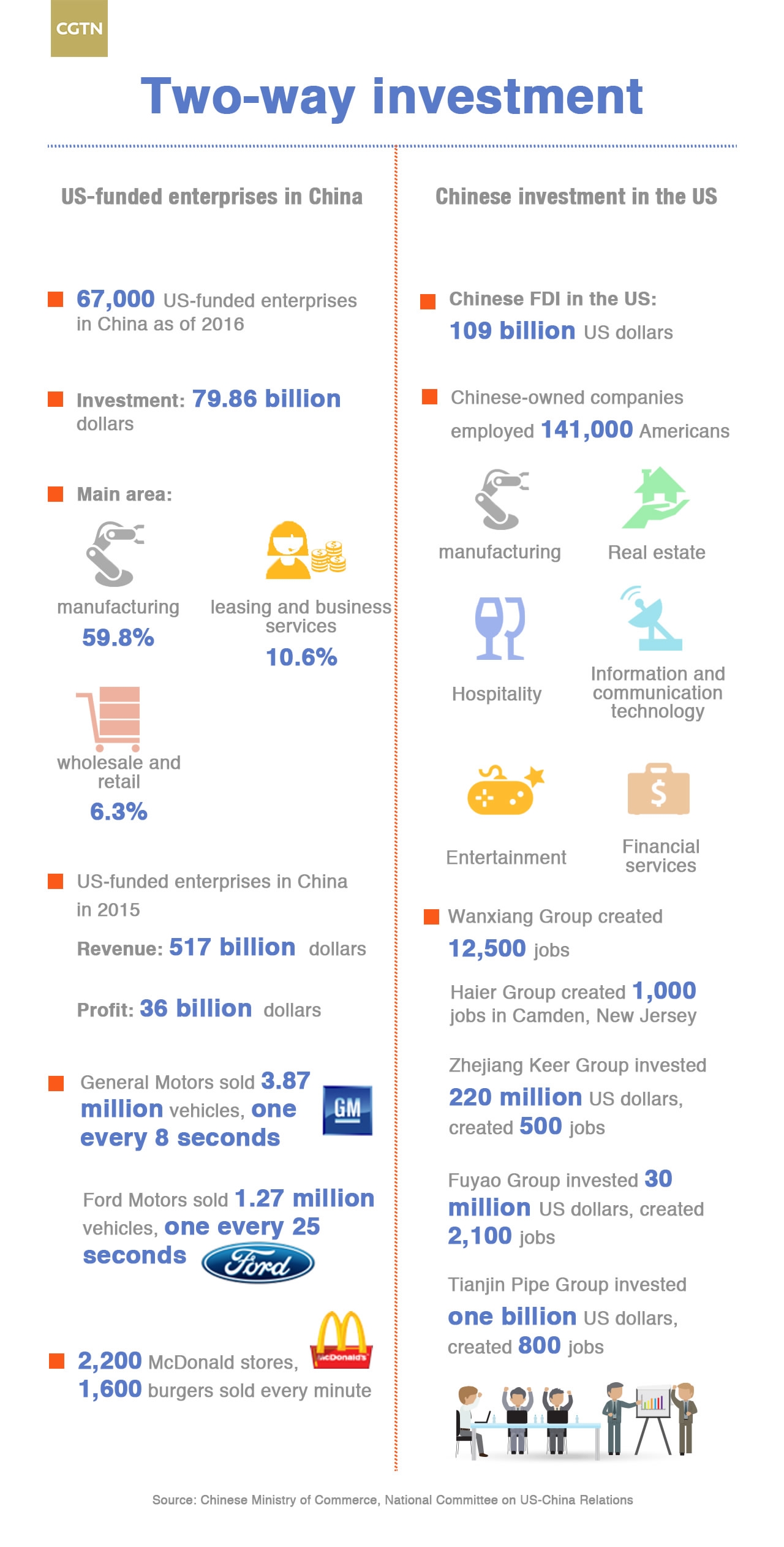
China-US trade ties are inevitable results of economic globalization, international division of labor, and optimal allocation of resources.
The US is at the higher-end of the global value chain, while China is still at the middle and lower stage. With the vertical integration of the industrial chain and the cross-border development of the supply chain, the high value-added design and development activities of the US have to work closely with the low-cost production and assembly in China.
In this win-win game, both sides have given play to their comparative advantages in bilateral trade and investment.
Related story:
China-US Think Tank Symposium to improve relations between the two









